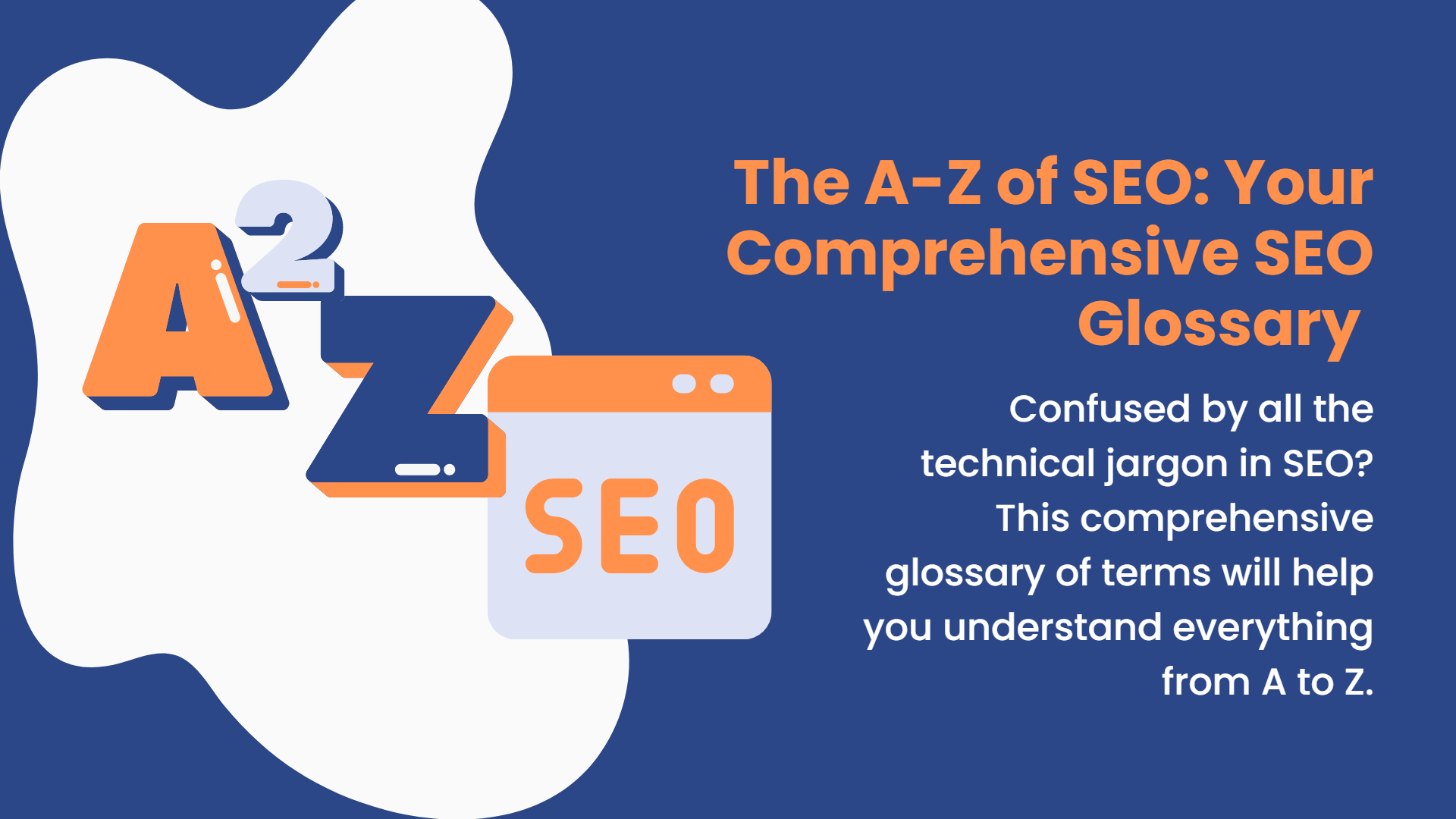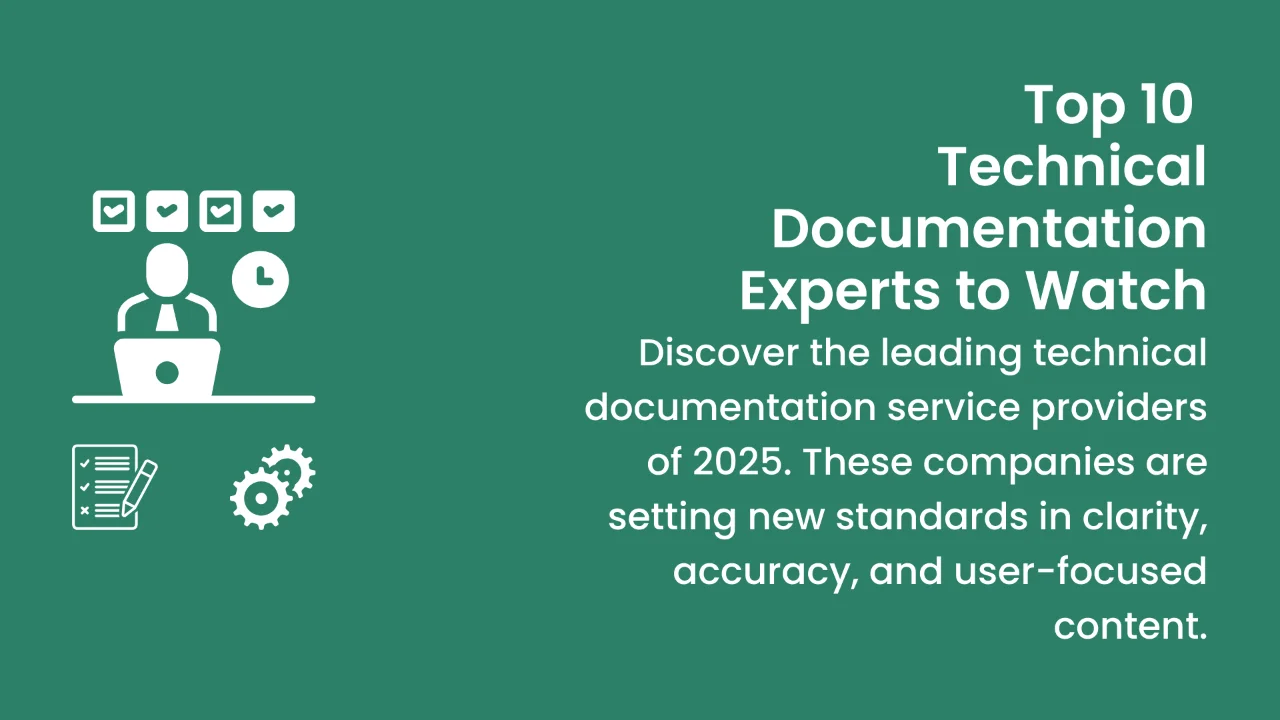Growth is a never-ending desire for every human being, and companies are formed by combining different individuals. So, how could a SaaS organization stay away from the desire for growth? No, it cannot. Therefore, it does almost everything to stay on top of the market, and one thing it cannot ignore is SEO for SaaS.
The fundamental of a SaaS is visibility in the online market. If your website isn’t appearing in the search results, you are not becoming the SaaS you want to be.
Hence, in order to gain that visibility, you need to work on your SEO strategies for your SaaS.
Below, I have curated a list of things you can do to effectively work on your SaaS company’s SEO. I’ll discuss the best strategies, tools, and agencies you can work with to get ahead in your game of SEO.
If ready, let’s get started with the crucial aspects of SEO for a SaaS company.
| “TL;DR: SEO for SaaS is basically like regular SEO (on-page, off-page, technical), but with a new twist – optimizing for AI search (think Google's AI Overviews, ChatGPT, etc.). It's essential to generate more organic traffic and establish brand authority. To nail it, focus on creating content that solves problems, making your website super fast, optimizing for those new AI search engines, being active on social media, getting good backlinks, using schema markup, and incorporating visuals. There are tons of tools like Ahrefs/Semrush and agencies like StanzaGo that can help you out, but remember, the core idea is to solve problems, engage, and over-deliver for your users.” – Generated with AI. |
What Is SEO for SaaS?
A SaaS is just like a regular technology company that provides its software as a service rather than as a permanent, one-time payment for download or installation. Hence, the SEO aspects one needs to work on for a SaaS will be the same as those of On-Page, Off-Page, and Technical SEO.
In addition, there’s Video SEO, and because AI is on the rise, you need to shift your SaaS SEO strategies towards AIO, GEO, AEO, and SXO.
If you don’t know about any of these, let’s have a quick look at them.
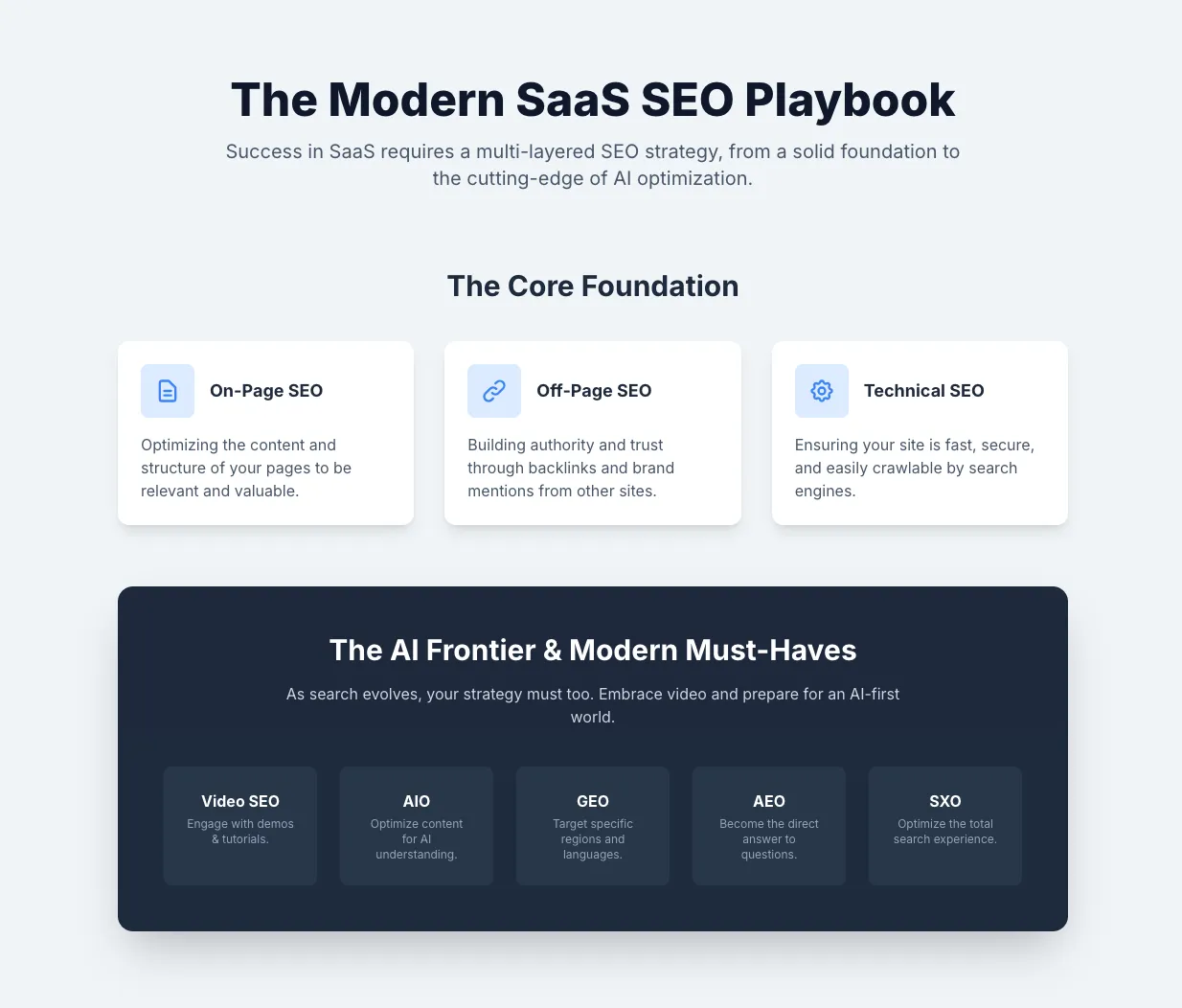
On-Page SEO for SaaS
The SEO work for a website starts with On-Page SEO. It’s related to the content you add on the pages and posts you publish. Through on-page SEO, you ensure that you are targeting the right keywords and, based on those keywords, offering meaningful solutions to users.
In the on-page SEO, you take care of the following:

- Proper heading tags.
- Content with internal and external links.
- Images with ALT text.
- Improved readability of the content with more active voice and transitional words.
- 1-2% keyword usage in the content.
- Keywords in the heading, URL, and meta description.
- Descriptive anchor links rather than Learn more or Click here.
Apart from this, you focus on content quality and relevance, use of Semantic SEO, and, if using FAQs, then optimizing the page for Schema markup.
By working on all of these points, you ensure that you’ve worked on the on-page SEO.
Off-Page SEO for SaaS
As the name suggests, Off-Page SEO is something that doesn’t happen on your web pages or posts. It’s carried out outside the website. The purpose of off-page SEO is to improve brand awareness of your platform, and for that, you can do the following:
- Link building
- Social media marketing
- Influence marketing
- Content marketing
- Brand mentions
- Local SEO
- Participation in Forums and Q&A websites
- Guest blogging
- Presence on review and rating sites
All these improve your website’s Domain authority, reach, and awareness that Google and other search engines count as Authority under the EEAT algorithm. Even the mention of your platform across the web positively impacts your SEO, and off-page is the way you can do that.
Technical SEO for SaaS
With the rise of mobile phones, the performance of the website matters a lot. How fast it is and whether all users can access the platform make it an essential factor for SEO. In technical SEO, this is what you do.
You ensure that the website isn’t taking too much time, users from various devices can easily access it, and there’s no cumulative layout shift.
AIO for SaaS
In order to improve the organic traffic, the role of SEO and AI for SaaS has become a combined thing now.
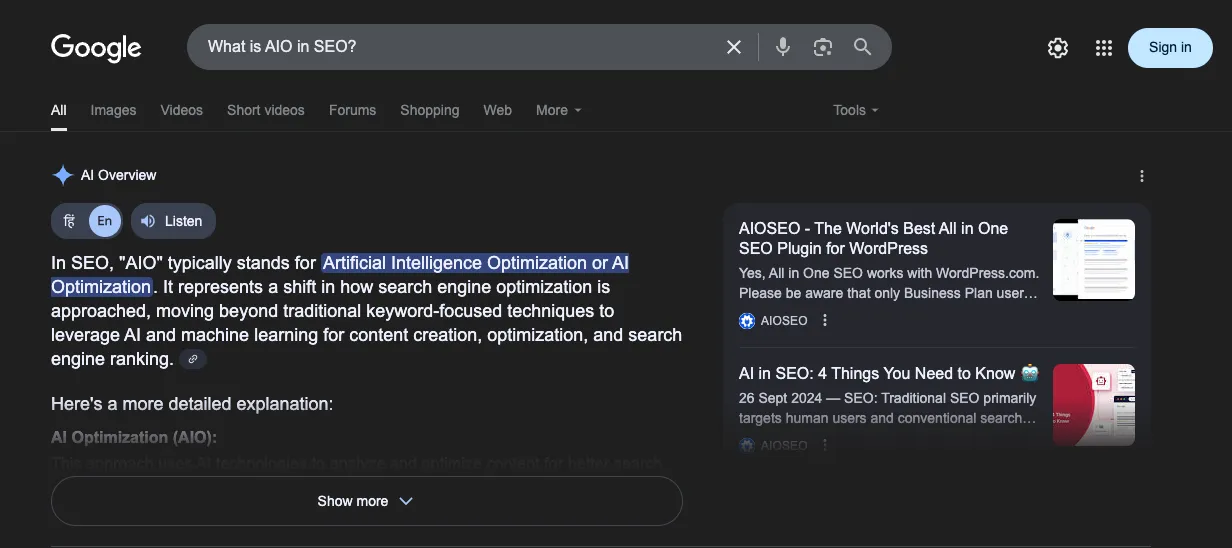
AIO refers to Artificial Intelligence Optimization, which means optimizing content for Google’s AI Overview–the quick summaries and short answers you see these days when you type any query on Google.
In AIO, you improve the SEO of the content by using AI-powered tools and algorithms that allow you to find out possible ways to improve a website's content, its structure, and overall user experience.

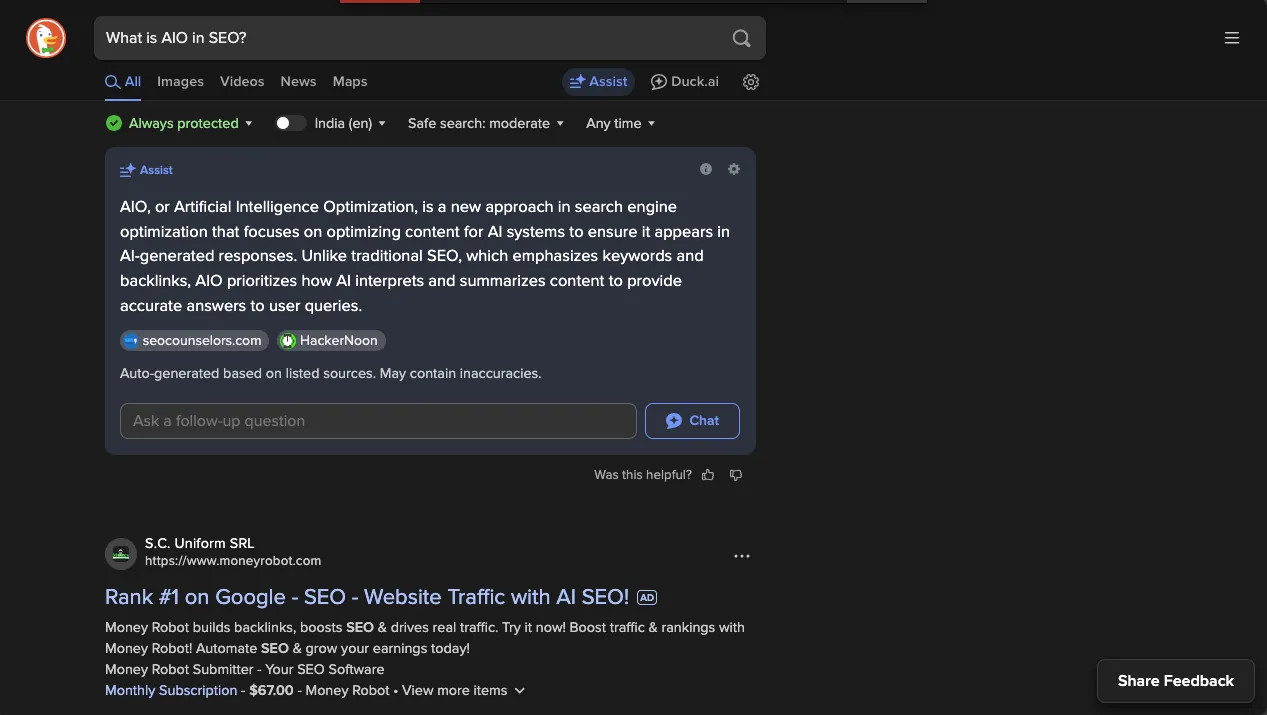
When you do AIO, you also cover the AI overviews of other search engines like:
- Copilot search/answer by Bing
- Assist by DuckDuckGo
GEO for SaaS
GEO refers to Generative Engine Optimization, which means creating and optimizing content so that it can appear in AI-driven search engines and generative models like ChatGPT search, Perplexity, Copilot, and Gemini.
You optimize the content in a way that it becomes eligible for voice search, images, and videos, too.
AEO for SaaS
AEO refers to Answer engine optimization (AEO), which means creating and optimizing content in a way that it can appear as an answer to a direct question in AI engines like ChatGPT, Perplexity, Microsoft Copilot, and Gemini.
The process involves keeping the content conversational and answering the questions the user might want to know.
It’s somewhere similar to GEO, but for AEO, the primary focus is to target phrases that can become a direct question—for example, using FAQs in the content and other terms that can become a question rather than just keywords.
SXO for SaaS
When we talk about SEO, we refer most of the time to ranking the website in a good position in search results. However, SXO (Search Experience Optimization) means optimizing the overall content by keeping the user experience in mind.
From appearing in search results to finally landing on your page and then continuing their journey is the primary focus of SXO.
Importance of SEO for SaaS
If you want to increase the organic traffic of your SaaS, then SEO is essential. Not only does it bring new customers to your website, but it also provides an enhanced experience to users already aware of your platform.
With SEO, you gain, you engage, and you convert, and every business wants that.
Hence, the importance of SEO for SaaS is high, and when you follow the SEO strategies for SaaS, you can expect:
- Improved rankings in the search results offer better visibility and traffic.
- High-quality and potential leads when you drive organic and relevant traffic to your website.
- More conversions and revenue than paid ads because the traffic is relevant.
- A solid brand authority and recognition.
- Long-term benefits are due to the evergreen and customer-relevant content you publish.
All these benefits make SEO all the more important for a SaaS company.
If you ignore it or do it poorly, then expect to lose revenue that you could have gained in hundreds or thousands of dollars.
But, as you are reading this post, it’s evident you want to leverage this aspect of marketing. Therefore, follow the below SEO strategies for SaaS to gain a position in the market, where people can point out to you directly when they need a solution that your SaaS provides.
Let’s check out those SEO strategies for SaaS companies you can practice to improve your SEO for SaaS.
How to Improve SEO for SaaS Companies
When it comes to improving SEO for a SaaS company, you need to look at every angle and work on areas that don’t jeopardize the platform further. Yes, you need to look at every aspect; however, you cannot do it all at once.
SEO is a big Elephant; in order to eat it, you need to go piece by piece. And below are those pieces.
First, you’ve got the Strategies, then the tools, and then the last, the best SEO agencies for SaaS. All these combined make it possible to enhance your SaaS platform’s SEO in the best way possible.
Best SEO Strategies for SaaS in 2025
The SEO strategies for SaaS are based on the latest changes in the online world.
When you work on them, ensure that they are still valid because SEO is ever changing; one day it's something and the next, it’s something else.
So, before you move, just give a hello to one of the AI tools and start improving your SEO for SaaS.
1) Publish Problem-Solving Content, Not Just Content
Every product, every software, and every SaaS is built to solve a problem. Perhaps multiple problems. Therefore, when you publish content related to your SaaS, ensure it is mostly targeting user problems.
People, when searching for a query on Google or AI Engines like ChatGPT or Gemini, more often than not, need answers to the problem they are facing.
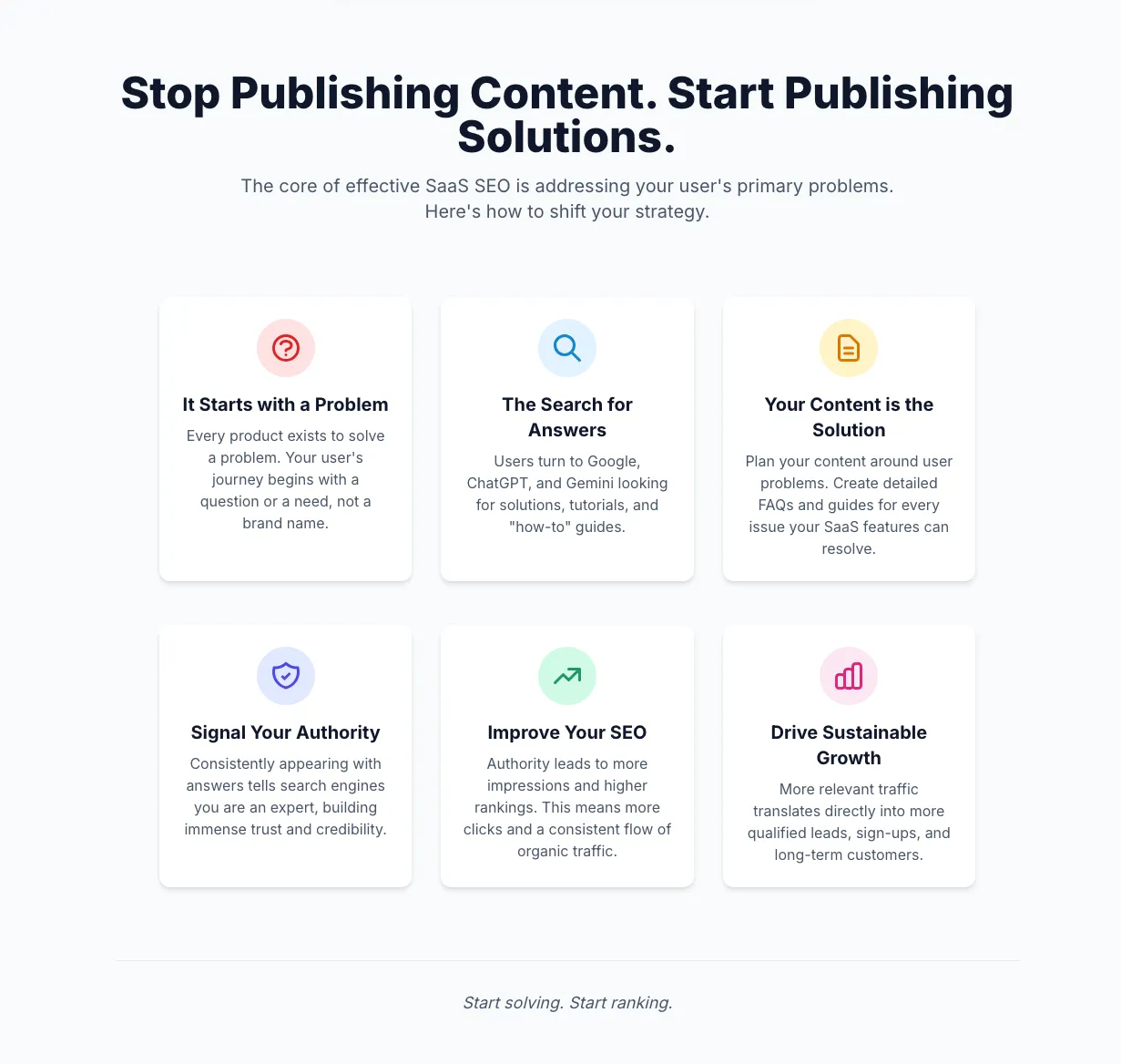
Therefore, if you plan your content based on this rather than just business-related or generic topics, you improve the chances of getting more impressions. When your website appears in the search results over and over, it signals the search engines that you are the authority and expert who can provide a better solution to the user.
Hence, you get more search clicks, which means improved SEO for SaaS.
So, target every how-to and FAQ that’s possible to do and answer using your SaaS and its features.
2) Improve the Performance of Your SaaS Website
This one is part of the technical SEO for SaaS. Through this, you can improve the workings of your SaaS platform’s website. And the reason you need to do this is that Google only ranks the website that’s designed keeping mobile phones in mind.
If your platform isn’t mobile-first, you cannot perform well when it comes to SEO.
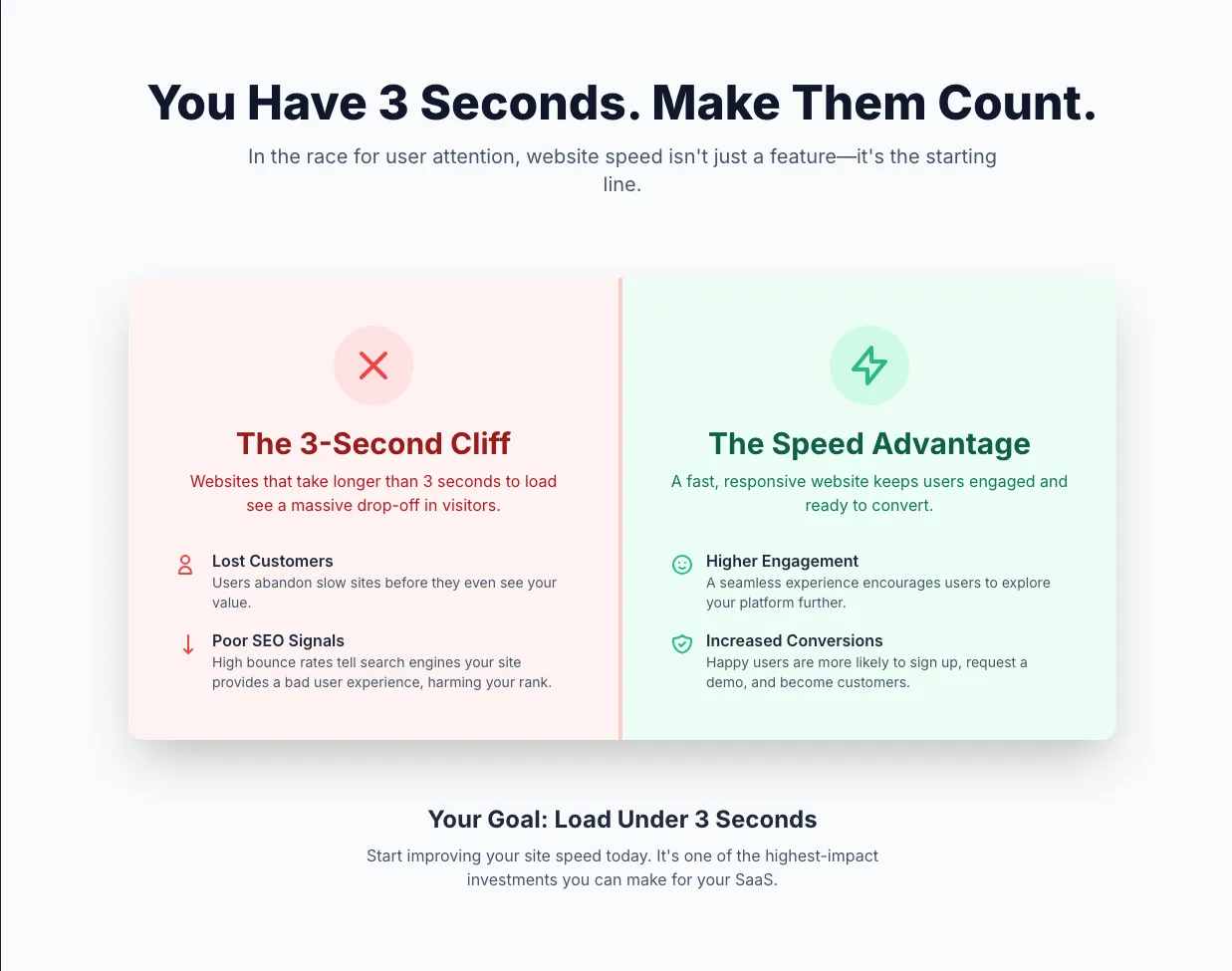
Furthermore, it shouldn’t take much time to load; hence, you need to work on improving its speed, as people tend to close websites that take more than 3s to open.
So, what are the ways to improve the performance of your SaaS website?
Well, for starters, you can start with:
- HTTP Requests minimization
- Enabling compression for CSS, HTML, and JavaScript files
- Image optimization (using webp if possible)
- Minimize or use no image in the fold area
- Keep system fonts or load them locally
- Leverage CDNs
If you can do all of the above, you can perform well.
3) Optimize Content for AI Search Engines and LLMs
AI and Answer Engines like ChatGPT, Perplexity, and Gemini are increasing their user base rapidly. As of June 2025, all these platforms have tens to hundreds of millions of daily active users individually, with ChatGPT alone boasting nearly 800 million weekly active users, and collectively count over 1 billion visits/queries daily.
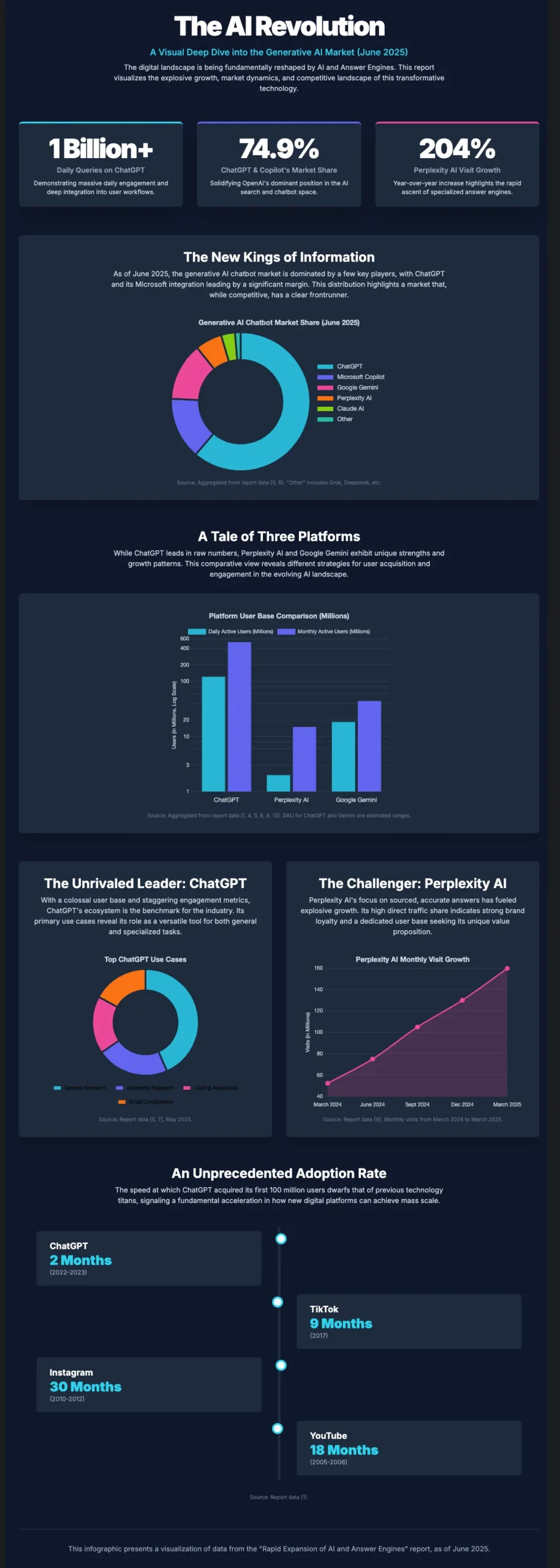
Furthermore, it has been found that websites are receiving massive traffic from AI tools like ChatGPT and Perplexity, with AI referral traffic increasing by up to 2000%. So, ignoring these when we are working on improving SEO isn't a good choice.
While you target the traditional search engines like Google and Bing, you should have strategies that can help your SaaS appear in the answers generated by the AI platforms.
And for that, you can try the following:
- Publish original content
- Target direct questions
- Add credibility by posting content from an expert
- Target long-tail keywords to appear in the voice search
All these make your SaaS SEO better as well as authoritative to appear in the AI results.
4) Leverage Social Media and Social Proofs
As mentioned earlier, even one mention of your platform online can impact SEO positively; it simply means that if you stay active on social media platforms like LinkedIn or X, you can improve your SaaS SEO.
Moreover, being active on these platforms also opens possibilities to an even extended market where your targeted audience usually spends most of their time.
In addition to this, if you list your SaaS platform on review sites like Trustpilot or G2, then it can significantly improve the Local SEO as well as authority.
When search engines find that people are genuinely showing interest in your products, it should put your products in front of other potential users.
Thus, better SEO for your SaaS platform.
5) Guest Post and Build Links
Publishing high-quality and original content is good to position yourself as a thought leader, but in order to establish authority, you need a reference. As Neil Patel says, “No matter how smart AI gets, one signal continues to be key for proving relevance and authority to search engines: high-quality backlinks.”
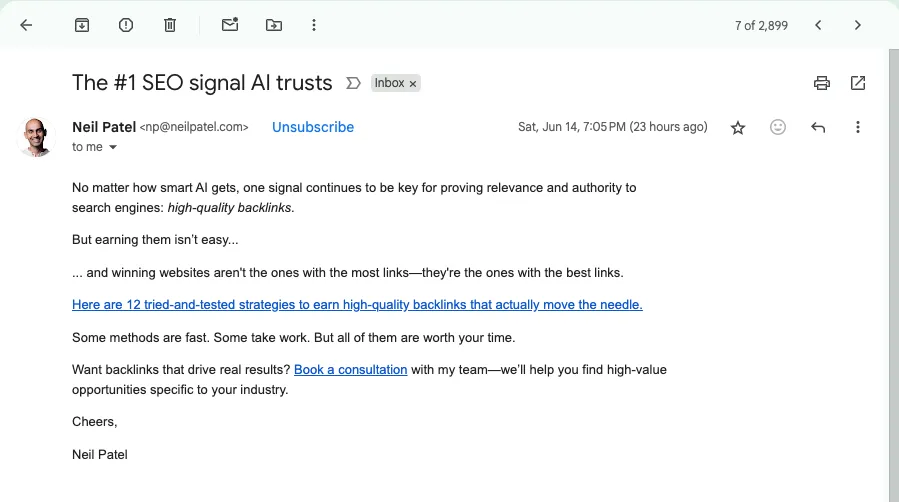
Therefore, work on building high-quality backlinks as well, so Google and AI engines can determine that other platforms value you; hence, it's beneficial for them to value your platform and offer their users your name.
One way to build backlinks is by writing Guest Posts.
This method is the best method to acquire evergreen backlinks and improve your domain authority, and with that, your SaaS SEO.
One thing to note here is that you shouldn't buy backlinks and sponsored posts as well, because when you do that, Google can easily determine it through the sponsored tag the admin will use for your link.
6) Implement Schema Markup
After the introduction of AI overviews, the effect of rich snippets might have been affected, but you cannot avoid them. Because Schema Markup, like FAQs, Reviews, and Breadcrumbs, still offers an improved search experience to the users.
Rich snippets are the highlighted information on the search results that motivates the searchers to easily find what they are looking for without opening the page.
When your website's content appears as rich snippets, it improves the chances of getting more clicks, which can be converted into leads.
Therefore, in order to improve SEO for SaaS, work on this essential aspect of technical SEO by utilising schema Markup.
7) Leverage the Power of Infographics and Video Content
Words are good, but they are not enough because, without visuals, you cannot make your copy engaging. So, when you publish content related to your SaaS, make sure it's well-balanced with graphics and visuals.
For instance, use infographics, video tutorials, and charts and tables that add more value to your content.
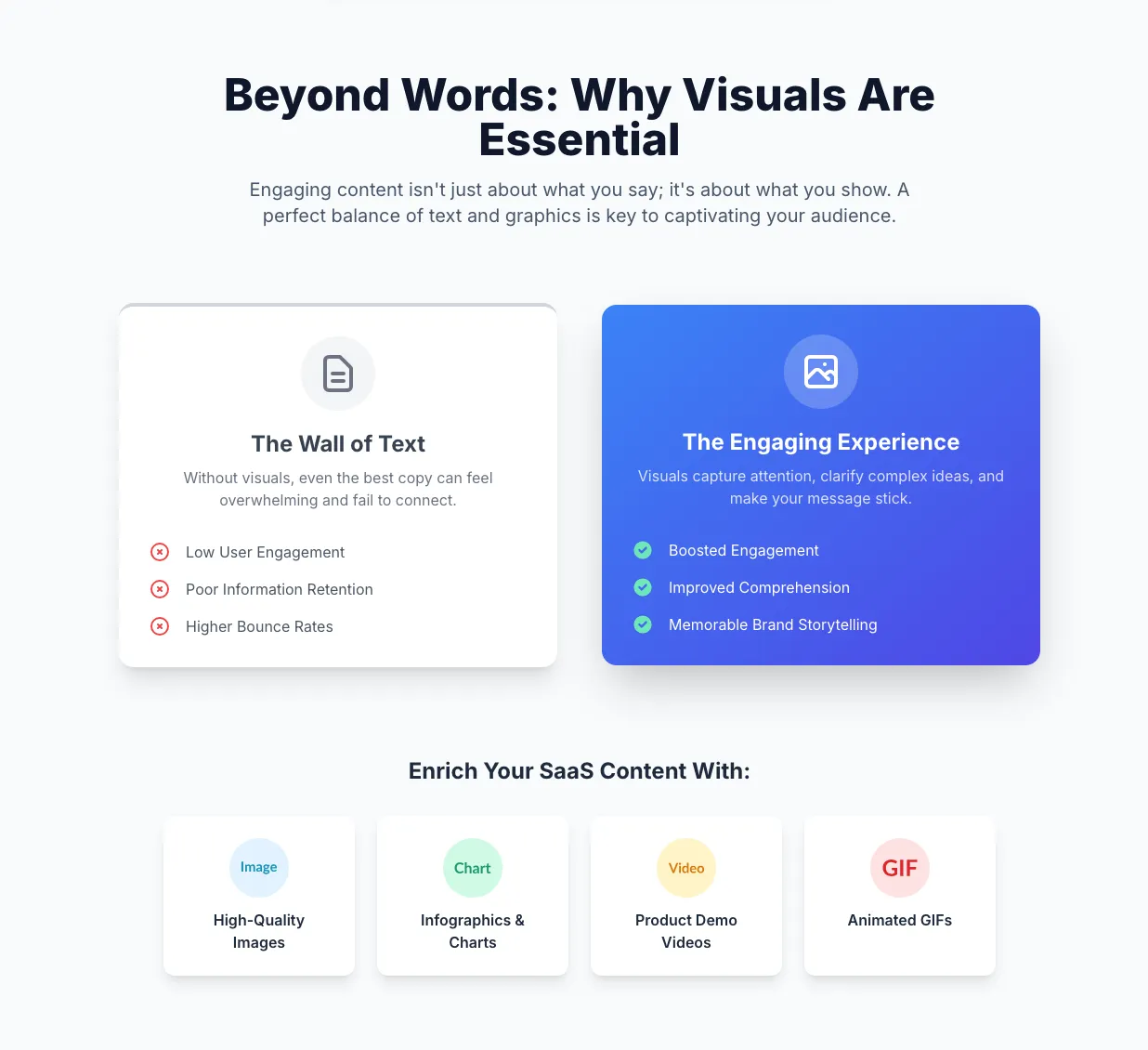
As per the research by Spoutworth, it’s found that content with visual receive 94% more views than content without it. Thus, don't forget to use visuals in your content and improve the page engagement, which further improves your SaaS SEO.
8) Create a Proper Sitemap and LLMs.txt
Another SEO strategy for SaaS that can help you immensely is using clear sitemaps. A sitemap of the website allows the search crawlers to discover the pages on your website and index them to their servers.
It's an XML file with all the links listed in it for easy discovery.
If your sitemap isn't proper or organized, expect no indexing from search engines like Google. You can locate your sitemap at: [website address]/sitemap.xml

To create your sitemap, you can use an online tool or simply follow the steps:
- Go to XML-sitemaps.com.
- Enter your website URL in the provided box.
- Click the "START" button to begin generating the sitemap.
- Wait for the tool to crawl your website and finish processing.
- Download the generated sitemap file (usually sitemap.xml).
- Upload the sitemap.xml file to your website’s root directory.
- Submit the sitemap URL to search engines like Google and Bing.
Sitemap is the traditional way to index your web pages to the traditional search engines, but now, as AI search engines are on the rise, you need something else as well, that's LLMs.txt.
This .txt file is for AI engines like ChatGPT to enable them to scrape your platform's content and present it to their users.
With this file, you can increase your chances of appearing in the search query results in the AI interfaces.

Want to create your LLMs.txt? Follow the procedure below:
- List your website’s most important pages and resources.
- Open a text editor and create a new file named llms.txt.
- Add a title (your website or project name) as a heading.
- Write a brief description of your website (one or two sentences).
- Organize your content into sections with headings (e.g., Core Content, Optional).
- Under each section, list important pages as markdown links with short descriptions.
- Save the file and upload it to your website’s root directory (e.g., yoursite.com/llms.txt).
- (Optional) Use an online LLMs.txt generator for automation.
In this way, you can improve your chances of appearing in the search for both traditional and AI search engines. If you’re still struggling with the LLMs.txt file, then use the following template.
# LLMs.txt for [YourBrandName]
Overview:
Welcome to [YourBrandName]! We specialize in actionable insights, expert resources, and practical tools for [your industry or niche]. This LLMs.txt is designed to guide AI models and digital assistants to our most valuable content.
=== Start Here ===
- [Main Portal](https://yourbrand.com) — Your entry point to all our resources and featured guides.
- [Quick Start Toolkit](https://yourbrand.com/toolkit) — Essential tools and checklists for beginners and pros.
=== Deep Dives ===
- [Strategy Playbook](https://yourbrand.com/strategy) — In-depth strategies for [your audience, e.g., SaaS growth, digital marketing, etc.].
- [Expert Interviews](https://yourbrand.com/interviews) — Conversations with industry leaders and innovators.
- [How-To Library](https://yourbrand.com/how-to) — Step-by-step tutorials and walkthroughs.
=== Community & Support ===
- [Meet the Team](https://yourbrand.com/team) — Get to know our experts and contributors.
- [Help Center](https://yourbrand.com/help) — FAQs, troubleshooting, and support resources.
- [Feedback & Suggestions](https://yourbrand.com/feedback) — Share your thoughts and help us improve.
=== Policies & Transparency ===
- [Data Practices](https://yourbrand.com/data-policy) — How we handle privacy and user data.
- [Terms of Service](https://yourbrand.com/terms) — The rules for using our platform.
Note:
For the latest updates and exclusive resources, visit our [Newsroom](https://yourbrand.com/news) or subscribe to our [Insider Newsletter](https://yourbrand.com/newsletter).
# Crafted by [YourBrandName] — Empowering [your audience] with knowledge and tools.
# End of LLMs.txt
Now, you can easily create your LLMs.txt file for your website.
9) Work on Local SEO
Another aspect of off-page SEO for SaaS is local SEO. If the visibility of your platform is good in your local area, then expect quality and potential prospects from the same city or country who might be interested in trying your SaaS.
To work on the local SEO and improve SaaS visibility, you can use Google My Business and Apple Business Connect.
So, customers using Android and iOS/macOS can easily find your platform.
10) Update Content and Repurpose It Regularly
When we don't polish or oil the old things, they get out of service. The same is with content on your website, if you don't update it regularly, it gets out of service, or you can say it becomes junk.
Therefore, in order to keep your SEO for SaaS effective, update the old content from time to time.
When you update, ensure you check for outdated information, grammatical mistakes, internal and external link opportunities, and proper use of keywords.
One more thing here essential to notice is that the update isn't about just improving the old content, but it's also about deleting that no longer serves the purpose. Having content on the website that's no longer relevant isn't a great approach to SEO.
So, update what's updatable, and delete what's no longer valid.
11) Research Keywords and Create Content With Intent Alignment
Publishing content on the website isn't enough; you must optimize it with keywords, and when I say keywords, it means with the right intent.
If you're not creating the topic around the intent, then there's no use in it.

Suppose you run an online store selling running shoes.
| Wrong Intent | Right Intent |
| You target the keyword “running shoes.” But your page is a blog post about the history of running shoes. Result: Users looking to buy shoes leave quickly, and you miss sales. | You target the keyword “buy running shoes online.” Your page is an e-commerce product listing with purchase options. Result: Users ready to purchase find exactly what they want, leading to higher conversions. |
There are primarily 4 types of search intent: Informational, Navigational, Commercial, and Transactional. It’s essential you know the intent of the keyword and, based on that, create your content.
To determine the intent of a keyword, you can use different tools that help you do that.
But if you cannot access those tools, then try this method:
- First, search keywords on Google and see what results appear to try to understand what the user is trying to get out of it.
- Look at the People also ask or related search at the bottom, these explicitly tell what the intent is.
- Even if this doesn't help, you can try tools like ChatGPT or Lechat to easily understand the intent behind a keyword.
Once you determine the intent, start creating your content.
12) Create Landing Pages With Personalized CTAs
CTAs on a page should guide the user to a definite action, not confuse them.
Therefore, when you add CTAs on your platform's landing page, make sure they are optimized and personalized. Optimize in a way that they don't feel phishy, and personalize in a way that people should feel motivated to interact with it.
13) Solve + Engage and Over Provide = SEO
Most of the time, businesses and professionals, when talking about SEO, will only think about themselves. For example, ask this question: What does SEO do?
And the first answer that will come to your mind will be “it helps our website rank in the search.”
That will be the answer.
But SEO is never directly about ourselves; instead, it's about “They.”
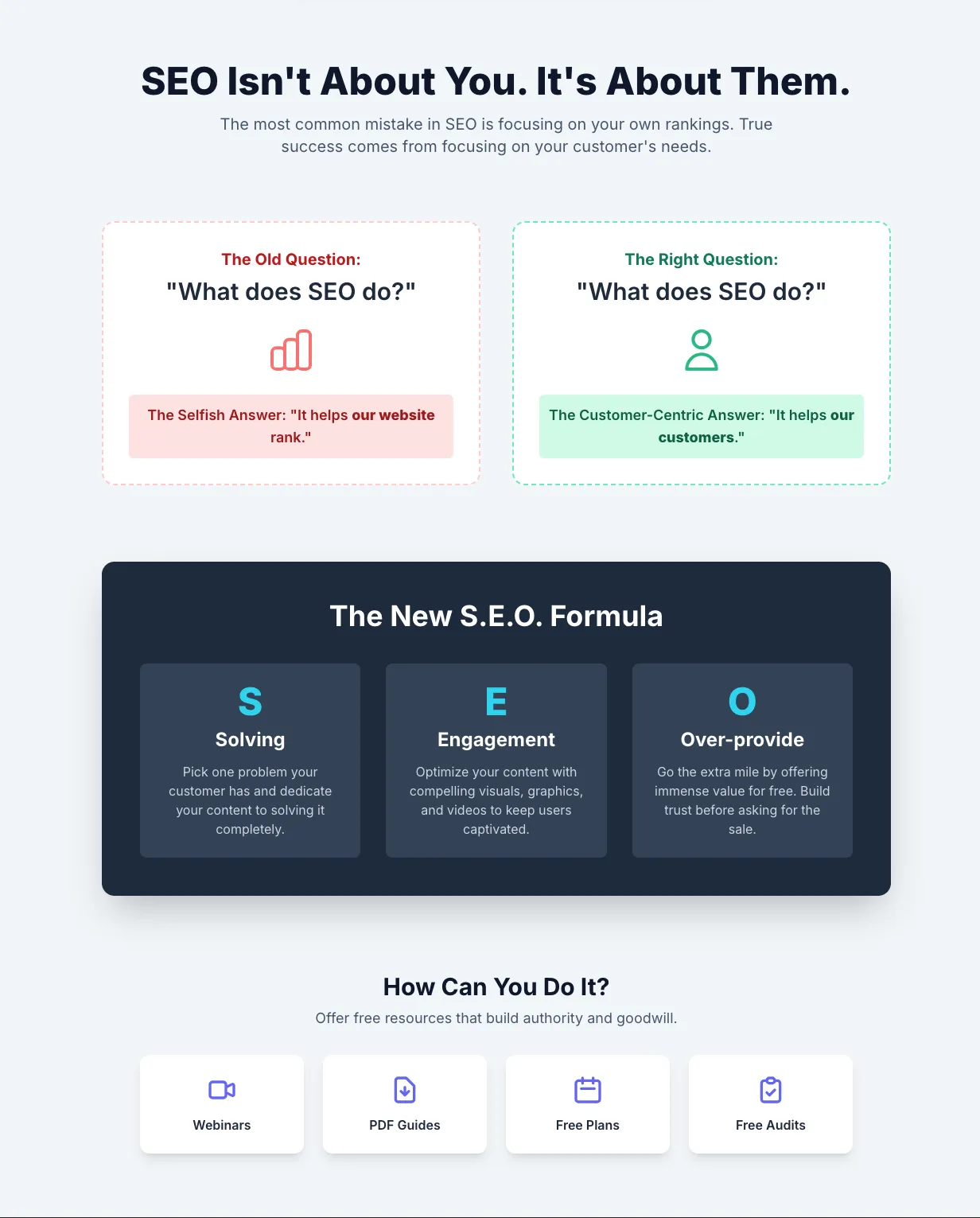
Whatever we are publishing, how it is helping our clients or customers is the purpose of it. It should be about:
- Solving = S
- Engagement = E
- Over provide = O
And how can you do it?
Well, by picking one problem, optimizing content with visuals, and offering free resources like webinars, PDF guides, or even free plans or audits.
That's what SEO is about.
Top SEO Tools for SaaS
We have looked at the importance of SEO for SaaS and strategies that can help you improve it. The strategies are good, but in order to apply them, you need assistance.
You can work on those SEO strategies for SaaS on your own, but with assistance, it can become easier. Therefore, you should:
- Use SEO tools
- Hire/Work with SEO agencies
Below, we'll look at some of the best SEO tools and agencies that can make your SaaS SEO effective. Let's start with tools.
i. Ahrefs or Semrush
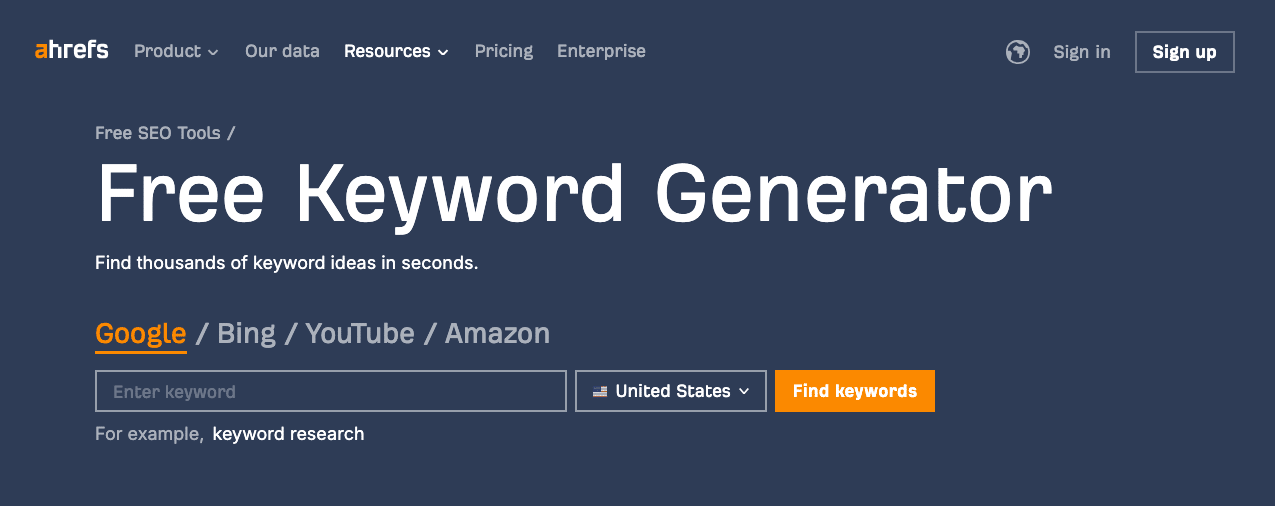
The first SEO tool for SaaS we have is the Ahrefs keywords research tool. With this top SEO tool for SaaS, you can:
- Find keywords
- Research competitors
- Analyze link-building opportunities
- Analyze SEO issues
- Track keyword rankings
- Audit your website for technical SEO problems
- Discover content ideas and gaps
- Monitor your backlink profile
- Explore top-performing pages (yours and competitors’)
- Identify long-tail keyword opportunities
- Check keyword difficulty and search volume
- Analyze paid search (PPC) data and ad history
- Cluster keywords and uncover related terms
- Get SEO metrics for multiple search engines (Google, YouTube, Amazon, etc.)
- Access advanced filters and presets for targeted research
You can also use Semrush if you don't want to try Ahrefs. It's also a premium SEO platform for SaaS to find opportunities to improve SaaS SEO.
Free alternatives: if you don't want to spend on these tools, you can use Google Keywords Planner or Ubersuggest for limited keyword research and competitor analysis.
ii. RankMath or Yoast/SurferSEO
For improved on-page SEO, you need to publish content that is optimized for that. For example, a content with proper tags, keywords, and links.
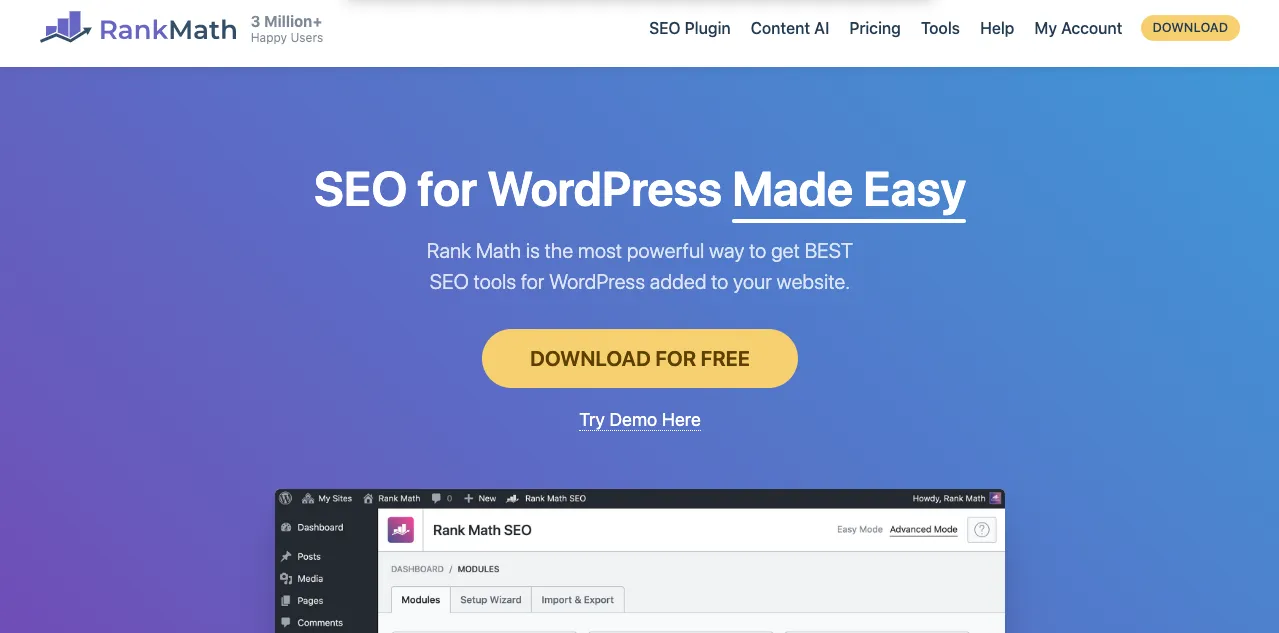
SurferSEO is one such tool that provides the metrics that help you effectively optimize the content.
By using it, you can easily determine the structure of the content, keyword usage, links, paragraph length, etc. If you're using WordPress as your CMS for your SaaS, then plugins like Rankmath and Toast SEO offer those pointers to improve on-page SEO for SaaS.
Free alternative to SurferSEO: Though RankMath and Yoast SEO have free versions, if you are using a CMS other than WordPress and don't want to spend on SurferSEO, then you can use ChatGPT or Frase’s free plan to optimize your content for improved on-page SEO.
iii. Synthesia AI
Visuals play a crucial role; hence, you should incorporate videos in your content if possible. If you cannot create videos on your own, then you can use video AI tools like Synthesia AI.
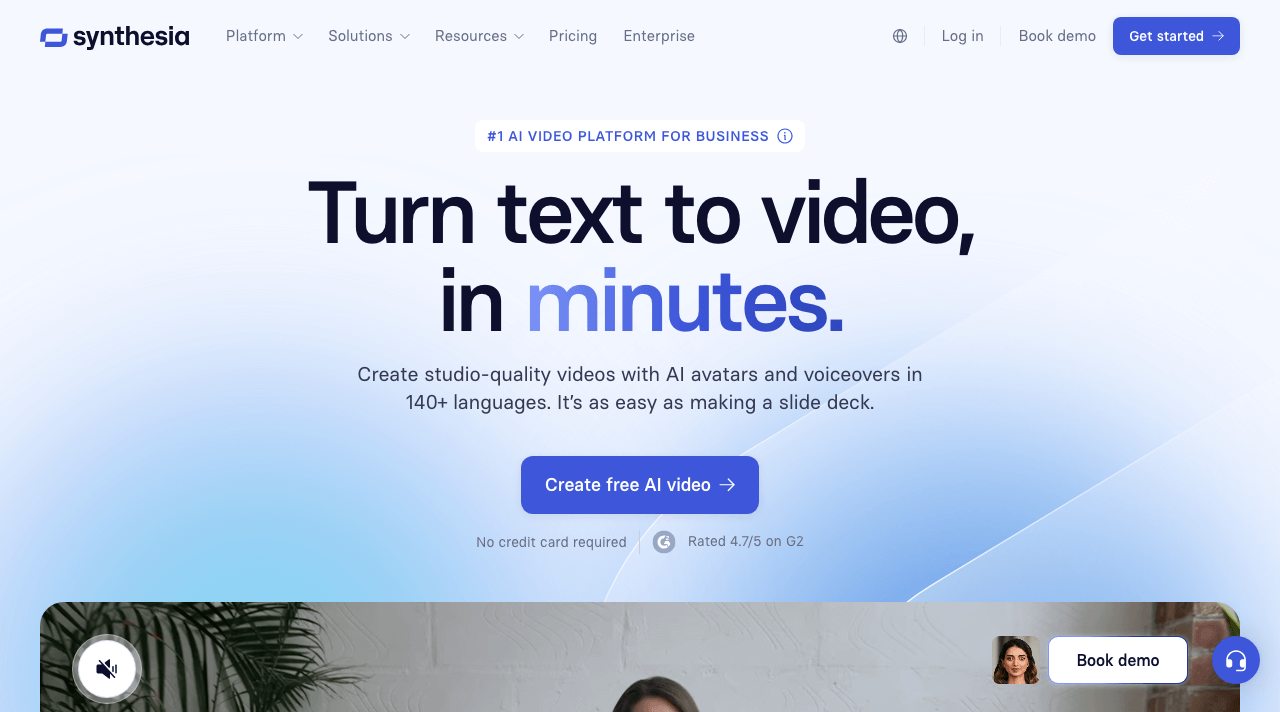
It's a premium AI video generation tool that can help you make videos you can use for various purposes for your SaaS.
For instance, by using Synthesia AI, you can:
- Create product explainer videos
- Make videos in multiple languages
- Use AI avatars to present content
- Turn scripts into videos quickly
- Produce training and onboarding videos
- Add subtitles automatically
- Customize videos with your branding
- Share videos easily on your website or social media
SEO and AI for SaaS work hand in hand, and by using this AI tool, you can effectively make that happen. Another reason for using videos in content is that, when people search on Google, every third result now is a video.
Hence, it becomes crucial to add video to content, and with this tool, it becomes easier to do.
Free alternative: Fliki.ai is another AI video generator tool that you can use to create effective videos for your SaaS.
iv. Canva or Napkin AI
As much as videos are important in the content, images and infographics play a crucial role in improving on-page SEO. Canva AI offers some of the best image generation tools that you can use to create and add infographics to your content.
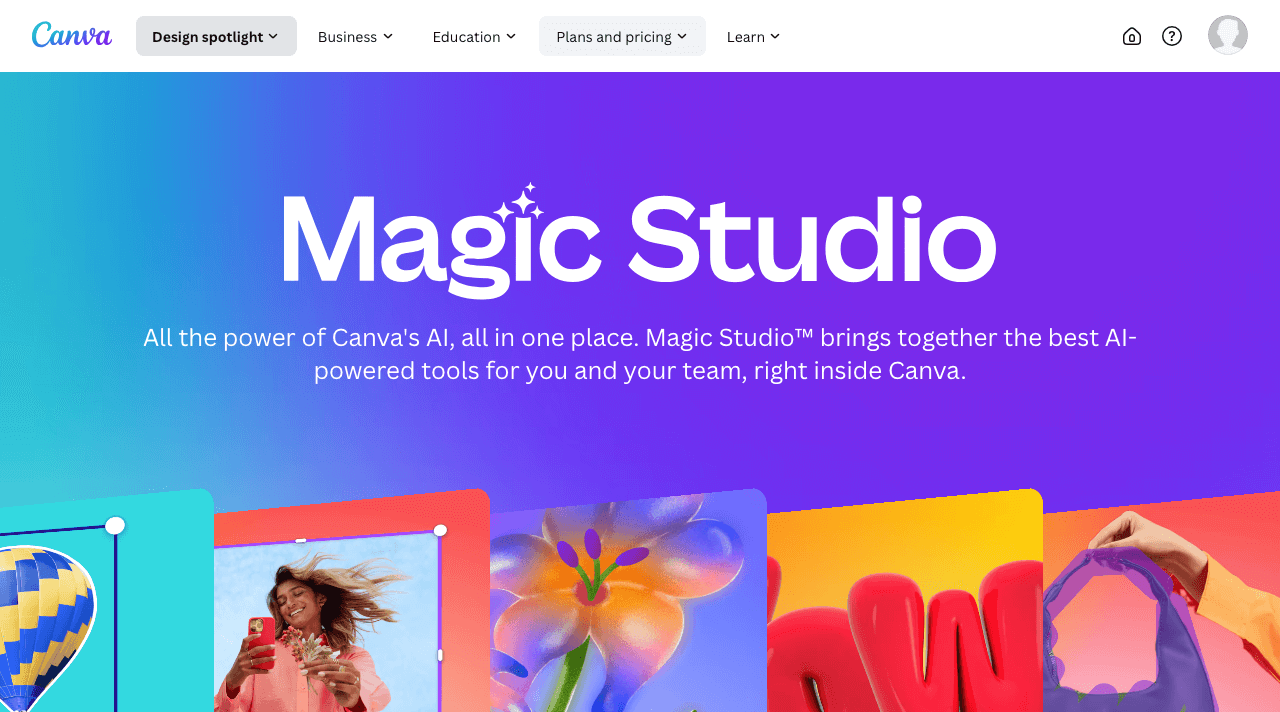
Even if you do not use Canva AI, the canvas it provides has effective tools that make it easy to create any kind of infographic or image.
Free alternative: Napkin AI is a free tool that allows you to turn your text into meaningful infographics. Simply add your content and choose from thousands of pre-built infographics templates, and it will be created based on the information you provide.
v. Screaming Frog, Sitebulb, and PageSpeed Insights
As much as content creation is important, it is also crucial that you have an idea of how your website is performing in the search and where you can improve.
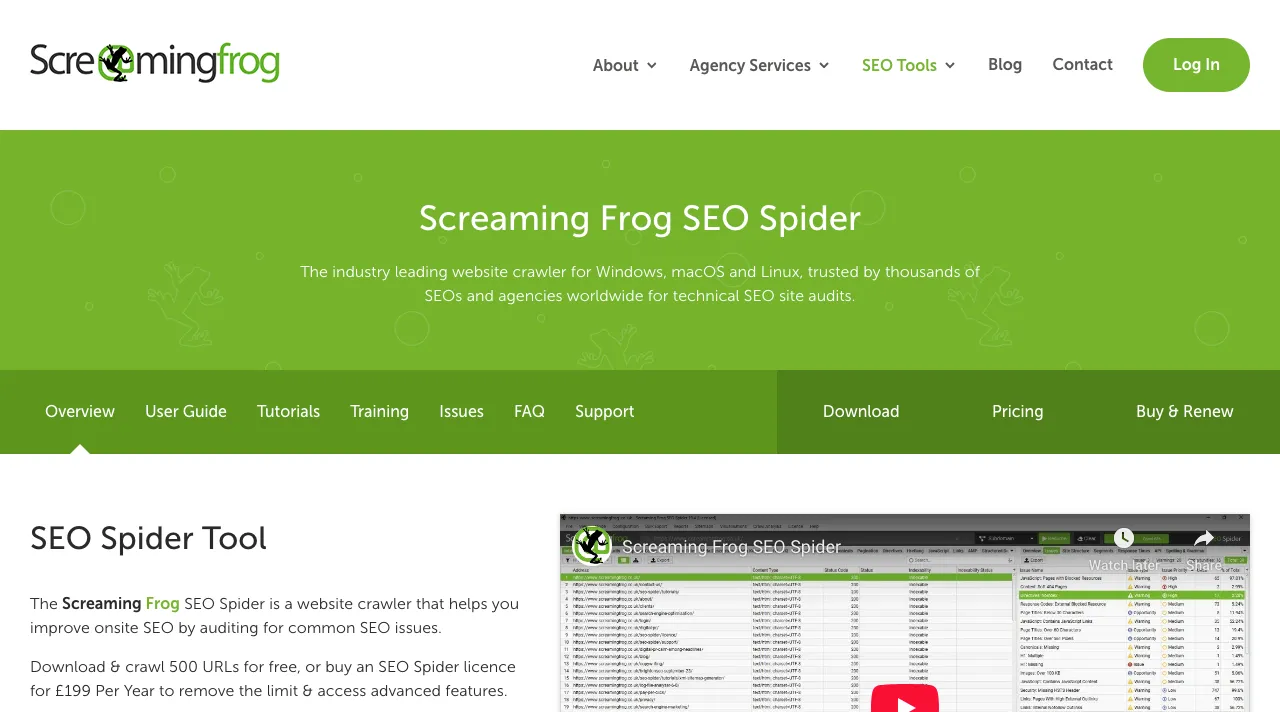
To do this, you have SEO tools like Screaming Frog and Sitebulb that provide you with a comprehensive report and allow you to analyse your website, so that you can effectively improve various areas of the website without following any complex process.
Free alternative: PageSpeed Insights and Google Search Console are SEO SaaS tools that let you analyze the performance of your website in terms of technical SEO and search results for free.
vi. Pitchbox and BuzzStream

The second-to-last SEO tool for SaaS we have is Pitchbox, which allows you to find backlink opportunities. You can also try BuzzStream, which provides you with tools that allow digital PR and link building.
Free alternative: to find backlink opportunities, you can also utilize the free plans of Hunter.io + GMass.
vii. AlsoAsked/AnswerThePublic and SERPwatcher
In order to optimize content for AI engines, you need to target direct questions, and for that, you can also use the AlsoAsked or Answer the Public tool.

These tools, based on a phrase you enter, provide you with a list of questions people usually search for.
By creating your content around those, you improve your chances of appearing in the AI engines' results. SERPwatcher is another top SEO tool for SaaS that lets you easily find those questions people usually ask.
Best Platforms for SEO for SaaS Companies
With SEO agencies for SaaS, you can work even better for your SaaS SEO. Why? Because SEO consultants have ample knowledge and means, they can utilize them for your SaaS platform.
They know what works and what doesn't, so that you don't spend your resources on things that aren't useful.
The following platforms provide the best SEO services for SaaS. By working with them, you can enhance your SaaS SEO immensely under your budget.
| SEO Agency for SaaS | SEO Services | Pricing | User Ratings |
| StanzaGo | Dedicated SEO services for tech brands | Starts from US$90 | 4.3/5 on Trustpilot |
| Rankstar | SEO services for all | 15-minute discovery call | 4.1/5 on Trustpilot |
| Embarque | General SEO agency | Starts from $599/month | Disputed |
| Skale | Dedicated SEO services for tech brands | Discovery call | 4.9/5 on Clutch |
| Mike Khorev | Dedicated | Free call | - |
a. StanzaGo
With StanzaGo as your SEO agency for SaaS, you can expect dedicated SEO services for your SaaS.
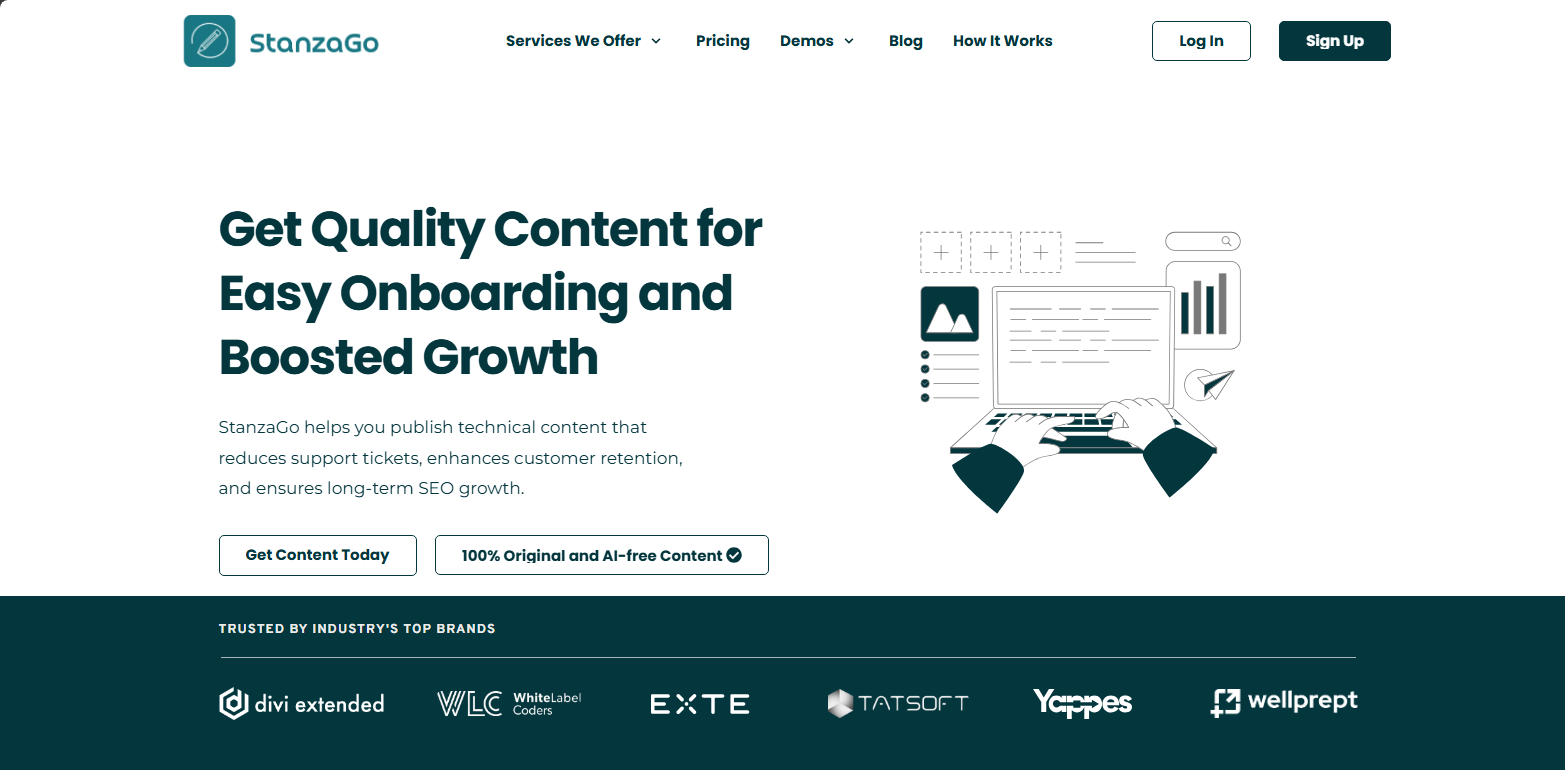
The team of SEO professionals at StanzaGo helps tech brands optimize their content, keeping the user intent in mind and publishing content that’s 100% human-written. You simply have to explain your goals and requirements, and StanzaGo will create effective SEO strategies for your SaaS website, under which you can expect results in as little as 2 weeks.
With more than 5 years in the market, and having strong expertise in SEO, StanzaGo is the top-rated SEO platform for saas with an average 5-star rating at Trustpilot.
The SEO services StanzaGo offers for SaaS websites are SEO blog posts, technical documentation, video tutorials, WordPress website technical SEO, setting up a KB, updating old content, and optimizing AI-written articles, if any.
With StanzaGo content services, you not only improve your rankings but also retain customers with improved customer support documentation.
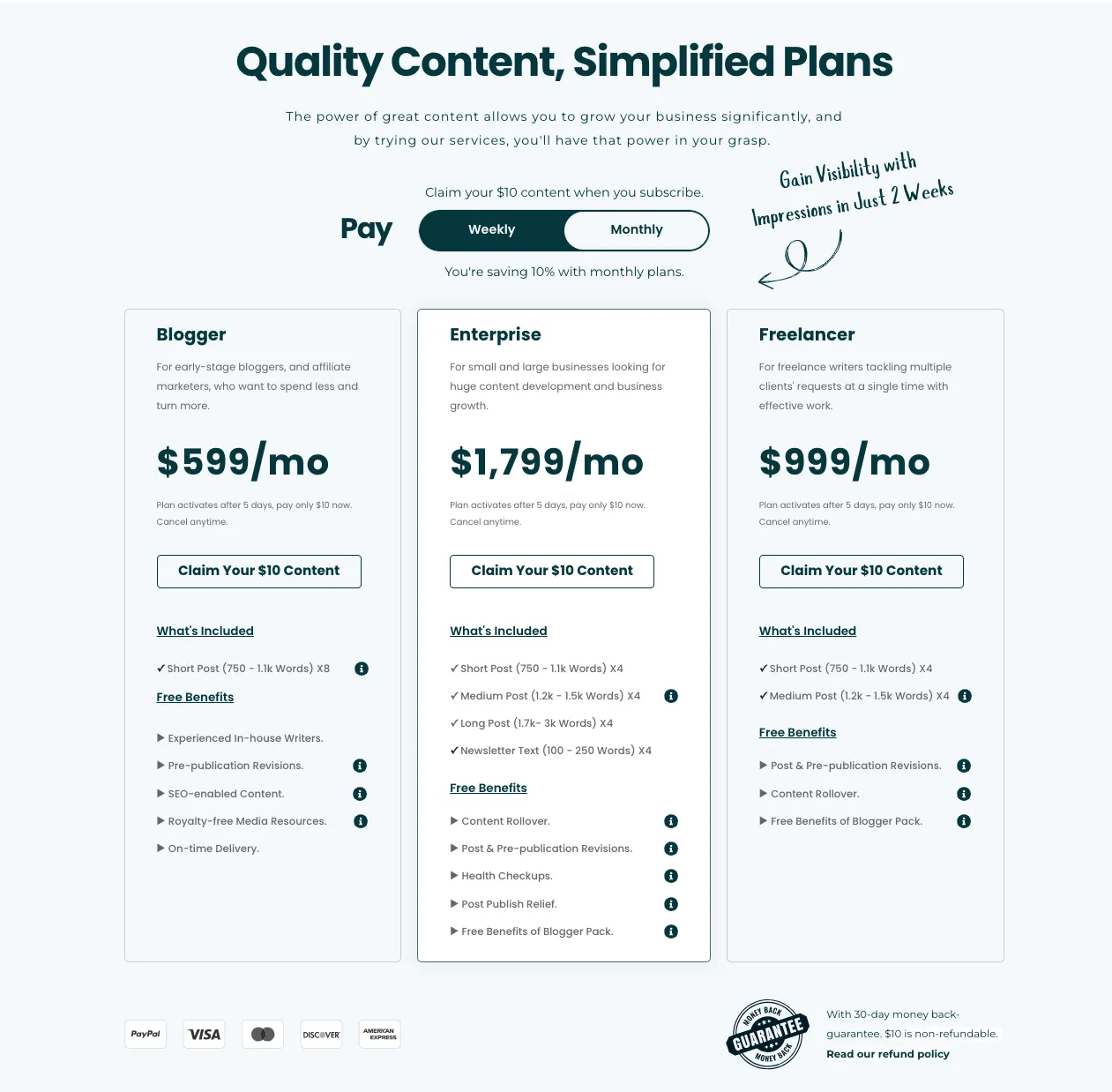
Their pricing plan starts from $90 per 750-word article that includes rich media, keyword research, proper styling, and more, with a 30-day money-back guarantee.
Hence, it’s the best platform for SEO for SaaS companies.
b. Rankstar
Rankstar is an SEO agency that offers Google Autocomplete improvement services. It means that when people search for something on Google, the autocomplete will suggest your brand, as explained in the following image.

Though it’s not a dedicated SaaS SEO service provider, you can hire them to avail SEO services for your SaaS.
Rankstar is a popular SEO agency and has ample experience when it comes to driving organic traffic to a platform. They can help you with SEO audit, SEO campaign, Link building, penalty recovery, and much more.
By working with Rankstar, you ensure that you get high-quality SEO services for your SaaS.
The pricing plan of Rankstar isn’t made public; you need to have a 15-minute discovery call, which can be saved if you choose to go with StanzaGo as your SEO consultant for SaaS.
c. Embarque
Embarque is another SEO agency you can work with to improve the SEO of your SaaS platform’s website. Like Rankstar, it’s not a dedicated tech brand's SEO company, but a general SEO services provider.
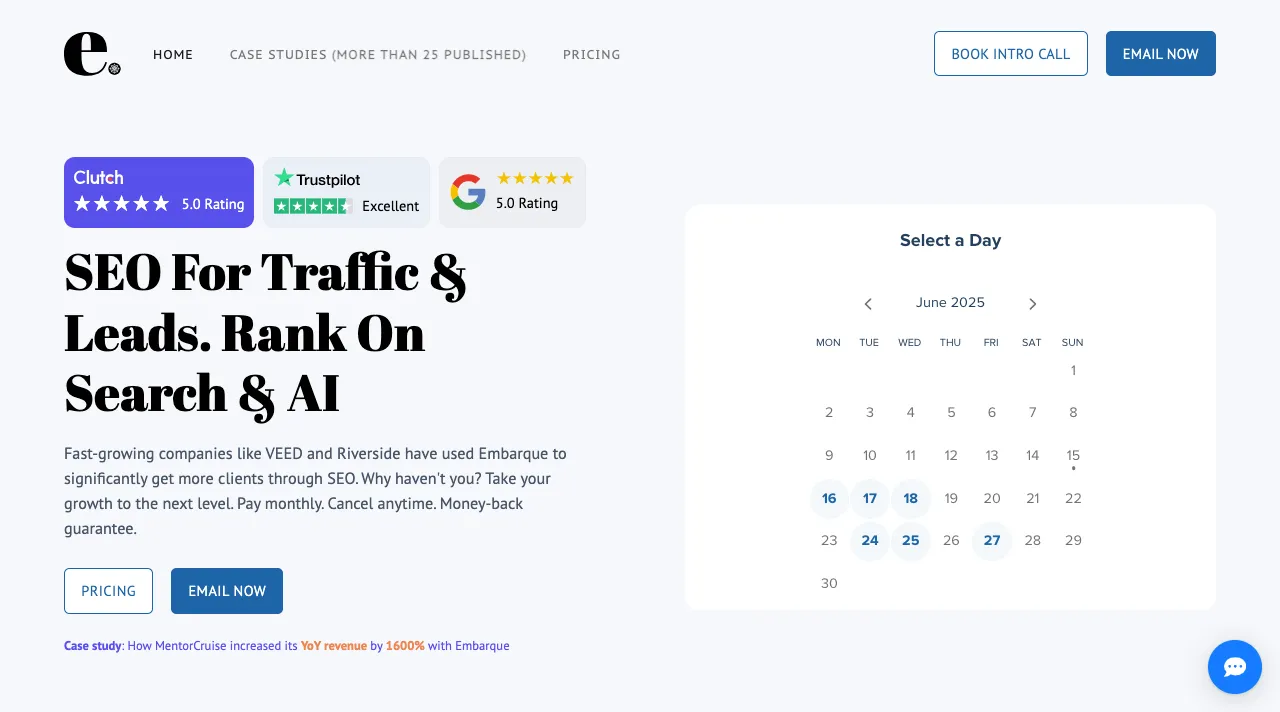
However, they have worked with plenty of SaaS companies; hence, you can rely on their SEO services for SaaS.
By working with Embarque, you can focus on your goals that relate to on-page SEO and off-page SEO. If you need technical SEO services, they might not be a good SEO agency for that.
But for pure content and link building, Emarque can give what others do not.
Their plan starts from US$599/month, which is a little bit expensive for a SaaS that’s just getting started.
So, if you’re looking for something budget-friendly, you can try working with StanzaGo.
d. Skale
Another dedicated SaaS SEO service provider is Skale, where you can request SEO services like GEO, Link building, Content production, and website migration. By working with Skale, you ensure that your SaaS gets one of the best SEO services, and you can expect better results for the amount you spend.
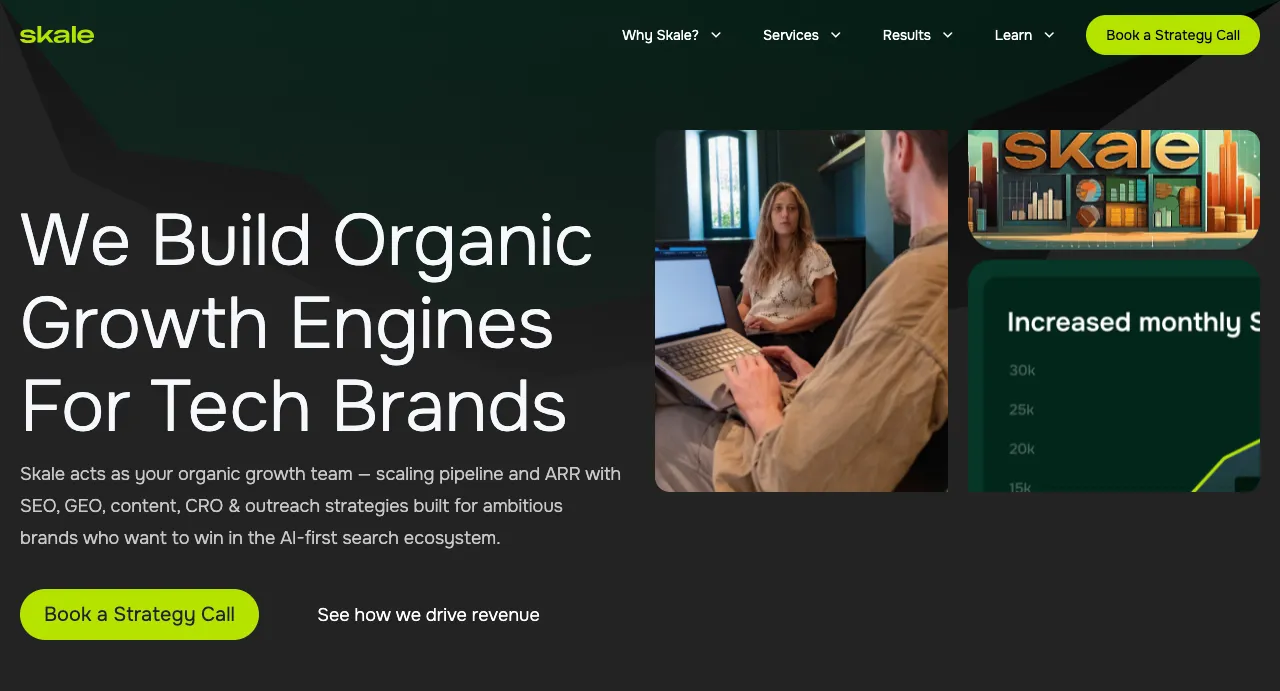
Based on their work experience, Skale has been able to increase revenue for several tech brands by 176%. In another case study, they have increased the signups by 450%.
Therefore, it simply means that with Skale, you can expect good results for your SaaS.
And because they are an agency with work experience with tech brands, you can start working with them without any doubt.
e. Mike Khorev
If you want to avail your SEO services for SaaS from an individual SEO consultant, and not an agency, then you can work with Mike Khorev.
Mike Khorev, with over 10 years of experience in digital marketing and SEO consulting, can help your SaaS platform thrive without any limitations. He has worked with multiple SaaS and technology brands and successfully provided the results his clients were expecting.
By working with him, you can avail SEO services like link building, better rankings on potential keywords, technical SEO, and maintenance.
Book a free call with him to find out how he can help your SaaS grow organically.
FAQs
What are the 4 types of SEO?
The general 4 types of SEO are on-page, off-page, technical, and local SEO. However, with the rise of AI and content presentation, now we have video SEO, AIO, AEO, GEO, and SXO.
How to find keywords for SaaS SEO?
In order to discover keywords for your SaaS, you can use tools like Ahrefs, Semrush, Ubersuggest, or Google Keyword Planner. You can also use Google Autocomplete to do that.
Which SEO should be avoided?
When it comes to avoiding SEO, you should never implement outdated SEO techniques. Plus, avoid black hat SEO techniques like Cloaking, Keyword stuffing, hidden text and links, buying or selling links, and Spamming comments.
What is a good number of keywords for SEO?
For a 1000-word content, you should prioritize 1-2% usage of keywords, but primarily focus on producing high-quality, information-rich content.
How important is SEO in a SaaS business?
If you want to drive organic traffic to your SaaS platform’s website, SEO is crucial. Without it, you cannot reach potential and organic users, keeping an appropriate budget expense.
Begin Your SEO for SaaS Journey
The best way to start working on your SaaS website’s SEO is to decide your goals. Once the goal is clear, you need to decide how you want to approach it, either by yourself or by hiring an SEO agency.
Once that’s also decided, get started working.
But one thing that’s crucial to note here is that SEO isn’t about benefiting yourself first. Instead, it’s about them. Your customers, your users.
Whatever content you publish, make sure it’s helpful and provides actionable steps. So that your targeted audience can overcome the problem they are facing effectively, this is the approach of SEO, and with a SaaS agency like StanzaGo and Skale, you can easily work on it.
We have discussed the importance of SEO for SaaS, how you can improve, and even tools and platforms that can aid you.
Now, it’s your turn to get started with your SEO for SaaS journey.
Take the first step: decide what you want out of your SEO efforts, and then do everything to get it.
But don’t forget, SEO is Solve, Engage, and Overprovide.




